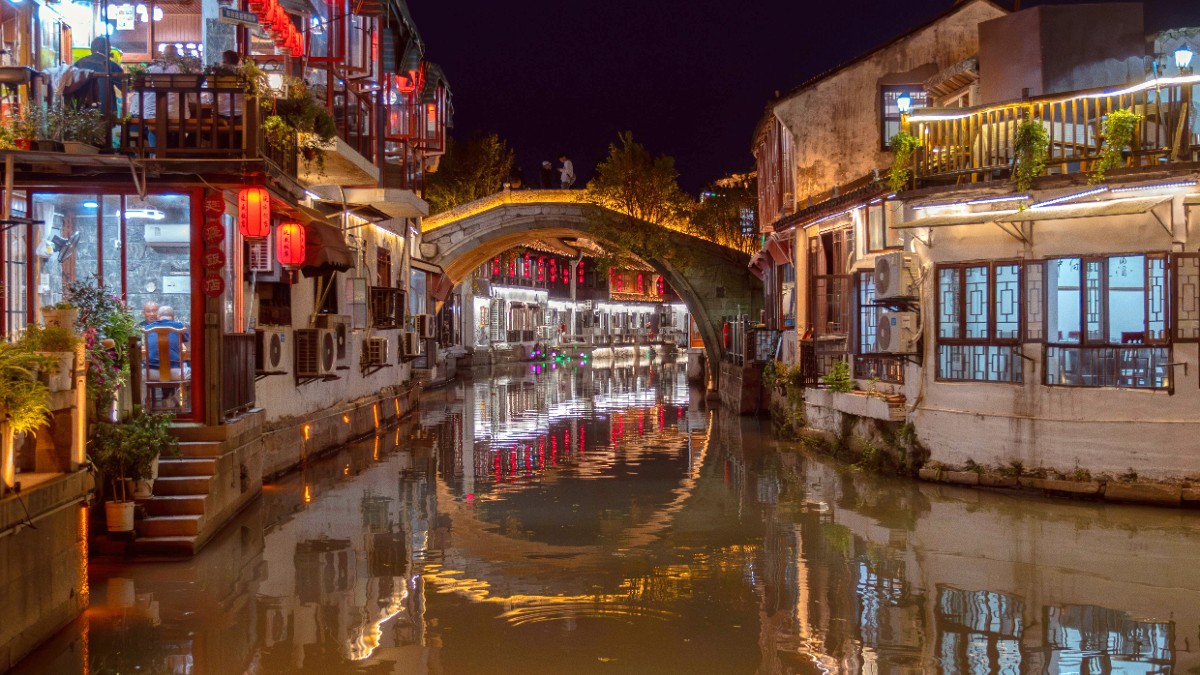
Jiangsu, China
Suzhou cuisine is famous for its delicate flavors, emphasizing freshness and beautiful presentation. It often carries a slightly sweet taste, using sugar as a seasoning alongside soy sauce and rice wine.
Due to Suzhou's water-rich environment, fish, shrimp, and seasonal vegetables feature prominently. The cuisine reflects the city's elegant aesthetics and scholarly lifestyle.
Freshwater fish (mandarin fish, carp), shrimp, crabs (hairy crabs), duck, seasonal vegetables (bamboo shoots, water chestnuts), tofu, and rice.
Sweet, savory, and slightly salty tastes. Uses minimal strong spices. Subtle layering of flavors.
Red braising (红烧 - hóngshāo) is common, resulting in glossy, flavorful dishes with a rich, caramelized appearance.
Deep-fried mandarin fish, a visual and culinary delight. Find it in upscale Suzhou restaurants.
A classic dish famous for its intricate preparation and sweet-and-sour flavor.
Succulent pork belly braised in soy sauce, sugar, and rice wine until melt-in-your-mouth tender. Rich, savory, and slightly sweet.
A staple of Chinese cuisine with an unique Suzhou sweetness.
A famous green tea from the Dongting Mountain region. Known for its distinct fruity and floral aroma. Enjoy in tea houses or purchase from specialty shops.
One of China's most renowned green teas.
Candied hawthorn berries on a stick, offering a sweet and tart crunch.
Glutinous rice dumplings dyed green with mugwort or barley grass, often with sweet red bean paste filling. A seasonal spring treat.
Luxury hotels host fine dining. For traditional, high-end Suzhou cuisine, visit Songhelou (松鹤楼) and Deyuelou (得月楼), known for classic dishes like Squirrel-Shaped Mandarin Fish.
Many mid-range options throughout the city offering local Suzhou cuisine and other regional Chinese dishes. Look for places popular with locals for authentic flavors.
Pingjiang Road and Shantang Street have many small eateries and snack stalls. Local markets offer fresh produce and prepared food stalls. Noodle shops provide quick, affordable, and authentic meals.
Mainly available in Suzhou Industrial Park (SIP) and areas around large international hotels.
These areas cater to the expat community and business travelers.
Japanese, Korean, Western (Italian, American), and other Asian cuisines.
Find these options in modern dining districts.
7:00 AM - 9:00 AM. Noodles, congee, steamed buns.
12:00 PM - 1:30 PM. Often the largest meal for locals.
6:00 PM - 8:00 PM. Many restaurants close between lunch/dinner.
Often open throughout the day and late into the evening.
Limited. A few dedicated Halal restaurants, mainly run by Hui (Muslim) Chinese communities. Search for "清真" (qīngzhēn) signs.
Look for specific signage.
Extremely rare and generally unavailable. Travelers requiring kosher meals plan to bring their own or purchase pre-packaged items.
Self-provision is advisable.
Translation apps (Google Translate, Baidu Translate) are useful. Obtain pre-translated cards explaining your dietary needs in Chinese characters.
For strict dietary requirements, consider booking accommodation with kitchen facilities and buying ingredients from supermarkets.
A highly prized delicacy in autumn (September-December).
Glutinous rice dumplings dyed green with mugwort or barley grass.
Mooncakes are for Mid-Autumn Festival, Zongzi (glutinous rice dumplings) for Dragon Boat Festival.
Savory pancakes made with oysters, eggs, and vegetables.
A flavorful street snack.
Come with sweet or savory fillings, wrapped in colored glutinous rice dough.
Colorful and diverse fillings.
Mobile payment (WeChat Pay/Alipay) is the dominant method for paying at restaurants and street food stalls. Cash is less common.
In local eateries, English menus or speaking staff are rare. A translation app or picture menu is highly useful for ordering.
Many Suzhou dishes rely on seasonal ingredients. Some specialties like hairy crabs are only available during specific times of the year.
Try a variety of local establishments.